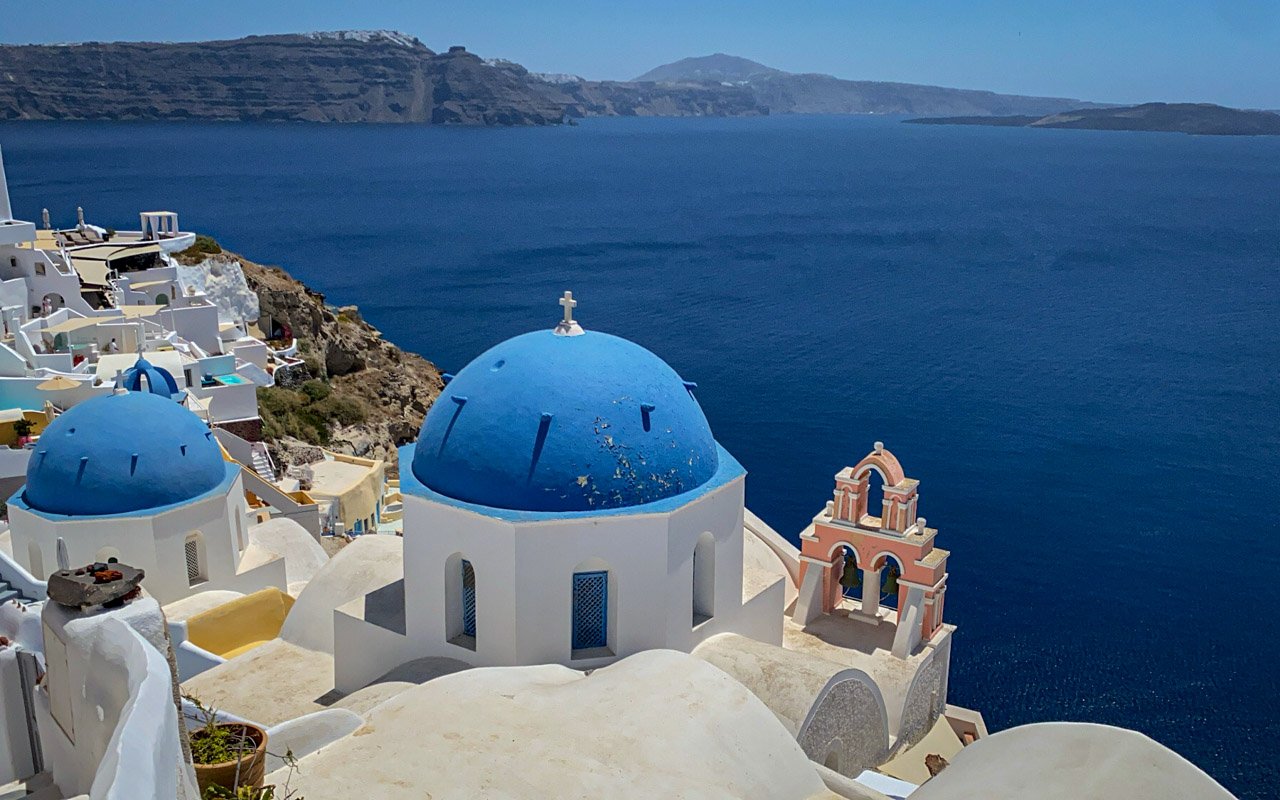
One of the most common questions people ask about the idyllic Greek island of Santorini is whether its active volcano is expected to erupt again in our lifetime.
In order to answer this simple, but at the same time complex, question a group of Greek and international scientists and researchers recently set forward a comprehensive plan to explore Santorini’s depths in order to discover the secrets of Greece’s most famous volcano and to determine its future.
The original idea to set out to explore the secrets still held by Santorini’s volcano emerged at an international scientific meeting which was recently held in Athens within the framework of the ”MagellanPlus” program.
The scientific proposal was then presented at this year’s annual international conference of the European Union of Geosciences. It is scheduled to be further analyzed on October 3, 2019, at the National and Kapodistrian University of Athens.
The aim of the October presentation in Greece is to promote the country’s participation in the European Consortium for Ocean Research Drilling (ECORD) and in the International Ocean Discovery Program (IODP).
Next year, the IODP is expected to authorize and then fund the promising geological research around the island of Santorini.
The head of the new team is Timothy Druitt, from the University of Clermont Auvergne in France.
The Greek academics who are participating in the project are Professors Dimitrios Papanikolaou, Stefanos Kilias, Costas Papazachos, and Maria Triantafyllou, Paraskevi Nomikou as well as the researcher Paraskevi Polymenakou.
The team also has a number of scientists from Germany.
Ambitious research project on the volcano in Santorini
The plan of the scientific team is not simply to explore Santorini’s caldera; they also aim to expand their research into the broader area of Christiana, Santorini, and Columbos, a geographic arc about 100 kilometers (62 miles) long and 45 kilometers (28 miles) wide, in the central Aegean Sea.
Christiana, Santorini, and Columbos, the three main volcanic centers of the Aegean, are also comprised of smaller, subsidiary undersea formations.
The scientific team has chosen four spots inside Santorini’s caldera for their research, including two main sites and two alternative areas, which will all have depths between 360 (1,181 feet) and 400 meters (1,312 feet).
The study will be conducted with the help of the research vessel ”JOIDES Resolution,” which is expected to arrive in Greece from the United States in 2022.
The team has proposed to conduct a total of six research drilling operations with the American vessel, across the Christiana – Santorini – Columbos arc.
The scientists expect to discover valuable information about the past of these ancient Greek volcanic regions, which still remain active, in hopes that the knowledge will help them better pinpoint the prospects for any volcanic activity in the future.
The history of Santorini’s volcano
Surprisingly for some, the Aegean Sea is known to be one of the most active volcanic regions in the Mediterranean, with more than one hundred eruptions over the last few hundred thousand years.
The most famous one of all, of course, is the volcano of Santorini (or “Thera,” as it is officially called).
Santorini is still the most active volcano in the entire Hellenic volcanic arc, and its activity has a history that exceeds two million years.
In the early years of its existence, Santorini had an extraordinarily violent and explosive history, with quiet intervals lasting a few thousand years.
The Minoan Eruption
The most recent complete eruption of this volcano, and the earliest in the recorded human history of this area, took place 3,632 years ago. Of course, in geological time, this is but the wink of an eye.
Around 1,613 BC, the volcano of Santorini produced one of the most violent eruptions ever seen since humans had walked the earth.
This blast, the most-studied volcanic eruption in history, is also believed to be one of the most dramatic, in terms of its implications not only to the specific region but around the world.
Its enormous impact was immediately felt across the entire Mediterranean. The blast, which completely destroyed the island of Santorini and its surrounding islands, became the reason behind the decline of the great Minoan civilization on Crete.
Scientists believe that the island of Santorini itself changed shape dramatically after the explosion. The island must have originally had the shape of a ring, with a much smaller caldera than it has today.
After the explosion, large parts of the original island were literally pulverized, and the remains then sunk under the sea.
The inhabitants of Santorini at that time most likely had time to evacuate their island, but archaeological evidence suggests that the rich and economically active center that Santorini had been at the time, was eventually buried under thick layers of magma and volcanic ash.
The modern era of Santorini’s volcano

At present, the volcano of Santorini is still dormant, or “sleeping.” This means that it is indeed still active, but an explosion is not believed to be imminent.
Smaller explosions have nonetheless continued to occur on Santorini throughout the centuries following the catastrophic eruption of 1613 BC.
Relatively larger eruptions took place between 1925 and 1928, when lava flows and even lava fountains were spotted, with some concomitant production of ash. These were the first volcanic events on Santorini after the invention of photography.
The most recent eruption was in 1950, when some minor volcanic activity produced relatively small quantities of lava.
See all the latest news from Greece and the world at Greekreporter.com. Contact our newsroom to report an update or send your story, photos and videos. Follow GR on Google News and subscribe here to our daily email!



